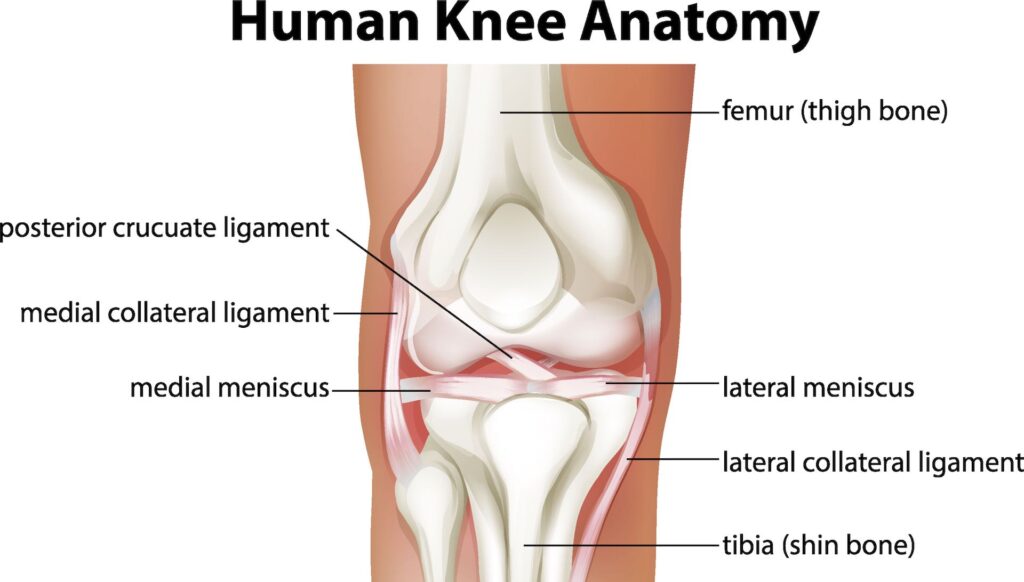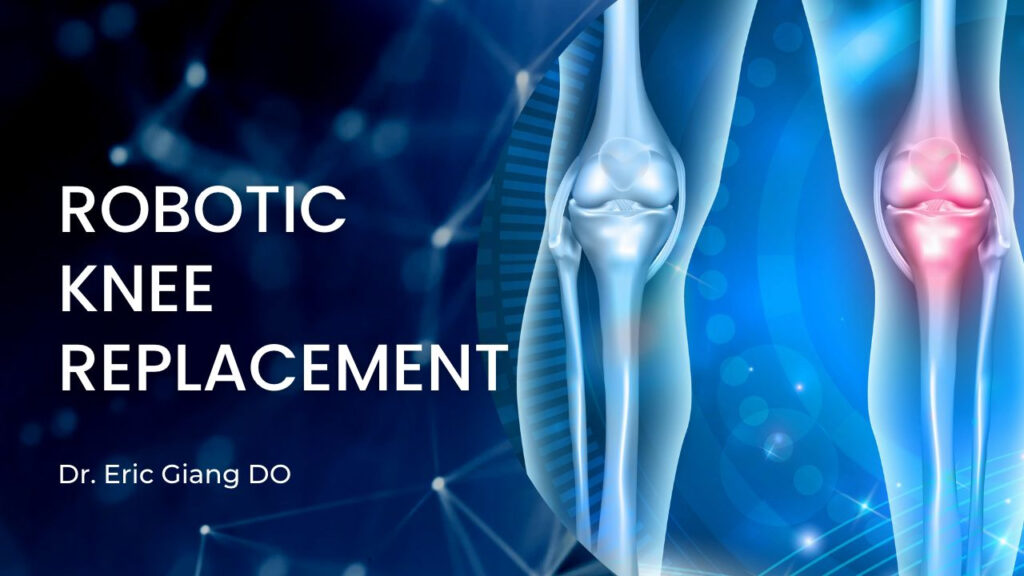Robotic knee replacement surgery is a relatively new procedure that has been gaining popularity in recent years due to some of the advantages it offers over traditional knee replacement surgery. In this blog post, I will discuss what robotic knee replacement surgery is, the advantages it offers, and what, if any disadvantages may be present dependent on the individual patient. I will also help you determine if robotic knee replacement surgery is the right choice for you.
Anatomy of the knee
The knee is the largest joint in the body, made up of the lower end of the thighbone (femur), the upper end of the shinbone (tibia), and the kneecap (patella). The ends of these three bones are covered with articular cartilage, a smooth substance that protects the bones and enables them to move easily within the joint. C-shaped wedges called menisci are located between the femur and tibia and act as “shock absorbers” that cushion the joint. The femur and tibia are held together by large ligaments that provide stability, while the long thigh muscles give the knee strength. The remaining surfaces of the knee are covered by a thin lining called the synovial membrane. This membrane releases a fluid that lubricates the cartilage, reducing friction in a healthy knee.

When these components aren’t working in harmony, disease or injury can result in pain, muscle weakness, and reduced function. When this occurs, it might be time to see me for a consultation to decide if a robotic knee replacement is right for you.
What is robotic knee replacement surgery and how does it work?
Robotic knee replacement surgery, also known as robotic-assisted partial knee replacement or robotic-assisted total knee replacement, is similar to a traditional knee replacement with the assistance of a robotic arm. During both procedures, the surgeon removes damaged tissue and bone in the knee and replaces it with an artificial joint (the prosthesis). The goal is to restore the mechanical axis, joint line, balance in flexion and extension gaps as well as patella tracking.
I use the NAVIO and CORI system, which is a surgical planning, navigation, and intra-operative visualization system combined with a hand-held, smart instrument for bone sculpting. This state-of-the-art technology allows for unprecedented precision, making total knee replacement surgery even more predictable and precise. During a robotic-assisted knee replacement, I use the system to take measurements of the knee, hip, and ankle to produce a 3-D image that’s specific to your knee. I then take that image and create a detailed surgical plan to select the optimal implant type and placement. This information is used to help tailor the position of the implant to your femur and tibia shape, taking into account your unique cartilage wear, bone shape, and soft-tissue balance. This system allows me to precisely remove damaged bone and restore motion and function to your knee with greater accuracy.
The advantages of robotic knee replacement surgery
There are many advantages to robotic knee replacement surgery. Recovery can vary from patient to patient however, the most notable advantage is a quicker and less painful recovery process. These advantages may be due to improved balancing of the knee and placement of components specific to your body and knee. Although the studies are still limited, it is thought that better placement of the components should lead to less wear and failure. In turn this could result in a better performing knee that could ultimately last longer.
Another benefit of robotic knee replacement surgery is the avoidance of drilling into the intramedullary canal of the femur and the tibia. This means prior trauma with retain implants do not always require additional surgery to be removed prior to replacing your knee. This results in less surgery and less scarring.
The disadvantages of robotic knee replacement surgery
There are very few disadvantages associated with robotic knee replacement surgery however, that still doesn’t mean it is a guaranteed fit for all patients. Most patients in my practice will undergo robotic replacements unless undergoing revision surgery. Size or weight restrictions are the main reasons not all patients are a good candidate for this surgery. Another disadvantage is that robotic knee replacement surgery does add some time in comparison to the conventional surgery as it requires active intraoperative planning to make sure the knee is best fit for each and every patient.
How to know if robotic knee replacement surgery is the right choice for you
If you are considering total knee replacement surgery, the best way to determine if a robotic knee replacement is the right choice for you is to set up a consultation. With my extensive robotic knee replacement experience, I will be able to help you weigh the advantages and disadvantages of robotic knee replacement surgery based on your individual case. In most instances, it is a great option for patients who are looking for a quicker and less painful recovery process.
If you have any questions about robotic knee replacement surgery or would like to schedule a consultation, please contact my office. I look forward to helping you on your journey to joint pain relief!
"*" indicates required fields


